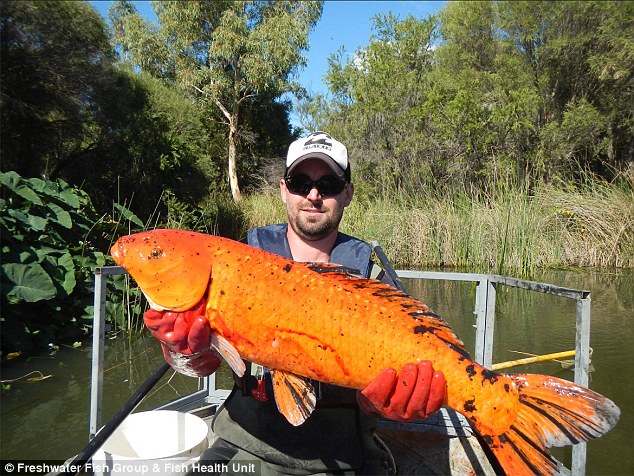What happens when you Free Willy your pet fish – becoming a big problem in waterways

We have all felt the desire to bring out the inner animal activists in us and to help those animals around us that we feel are not necessarily being treated as they should be and how nature intended for them to be treated.
It can be hard to look at an animal who you feel should be out in its natural habitat, enjoying the freedom that nature’s abundance has to offer it, and see that it is confined to a smaller space within your home. This is how many people feel when they have goldfish or koi and that can inspire the noble deed of letting the fish out in a natural expanse of water.
Unfortunately, sometimes even the best of intentions do not have the best outcome. Domestic goldfish which are also known as Carassius aruatus, have the ability to grow as big as the resources around it. The Koi carp in the lead image is weighing up to 8kg and up to one metre in length are another of the 13 introduced pests and was taken by the freshwaterfishgroup.com
Given the vast amount of space and resources that are available in many of the natural water sources that people release the domestic goldfish into, the size to which a goldfish has the ability to grow is quite staggering. Many domestic goldfish have the ability to grow to a weight of four pounds or more depending on the resources surrounding them!
In an ironic twist, people that are trying to do something that is seemingly good are actually creating a more harmful scenario for the aquatic environment. It is not good for the ecosystem to reintroduce domesticated fish into the water, as they become a highly invasive species and do not interact with the ecosystem as nature intended.
While goldfish are a seemingly innocuous fish that cause little trouble while they are contained within a bowl in a house, they are far different once they are released back into the wild. Oddly enough, and to the surprise of most people, goldfish are carnivorous, and when reintroduced into the environment they create an imbalance in the ecosystem.
This is a problem that is becoming even more dominant in Australia as well as the United States and Canada where many people are releasing their previously domesticated goldfish back into the wild, with, of course, the best of intentions, but inevitably only serving to cause more harm.
Goldfish are full of surprises. Once they are released back into their natural habitat, not only are they feasting on a lot of the resources around them, but they also travel quite extensively.
Goldfish have shown the ability to cover vast distances during the breeding season, with some goldfish moving a distance of over 140 miles in a year. A truly staggering distance when one considers that when domesticated they are kept in the confines of a tiny bowl.
